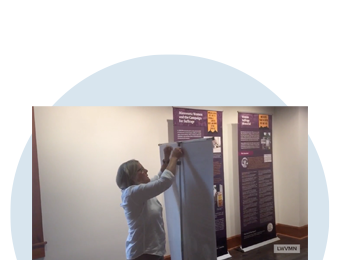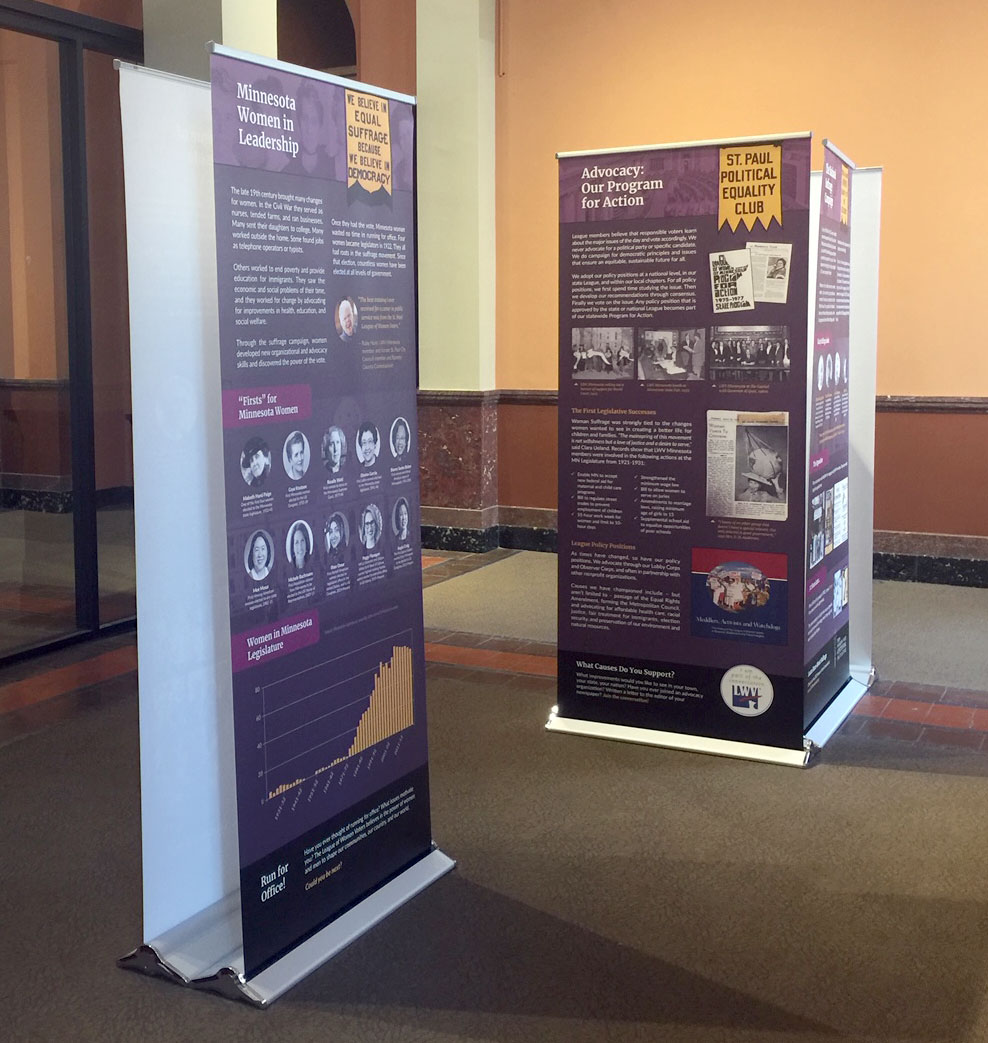Exhibit Setup Guide
The Kit Includes…
11 banners in zippered carrying cases
1-2 extra poles (likely inside the carrying cases)
Setup/
Take-Down
Even if you are familiar with retractable banners, please review these instructions before working with our panels. This sequence is designed to help prevent damage from banners snapping back into the base. Thank you for your help!
How to Set Up the banners
Remove metal base from carrying case and set on floor.
Unfold the included pole (but do NOT extend it yet) and insert pole into round slot in base. Make sure the pole is completely seated before continuing.
Lightly step on edge of metal base to hold it down for step 4.
Pull banner up and hook in place (align plastic hook with yellow center marker on banner).
Unlock clasp at top of pole, slowly extend to MAX line (banner will extend with it), and re-lock clasp. If the pole comes out while you are trying to extend the pole, simply reseat the pole and continue extending.
Move banner to desired position by grabbing its pole. DO NOT pick up the banner by its edges. If you need to adjust the positioning of a banner but can’t easily reach its pole, use your feet to nudge the base into place.
Tip: On occasion, you may need to straighten the banner after setting it up (it may appear crooked). If so, gently grasp the sides of the banner and give it a little wiggle.
How to Take Down the Banners
Unlock clasp on pole and lower telescoping portion FIRST.
Once pole has lowered, unhook banner from pole.
Slowly feed banner into base. Watch to be sure it retracts straight and not at an angle.
Fold up pole and place banner & pole back into carrying case.
Suggested Banner Layouts
Exhibit spaces vary in size and shape. Below are some suggested arrangements for our exhibit panels. All panels must be present and easily visible in the display.
A row with panels back-to-back (viewing sides out).
Three panels in a triangle.
Four panels as a square.
Ten panels arranged around the outside of a room. (The first and last panels have other jobs.)
Here are some real-life examples from other exhibit locations:










